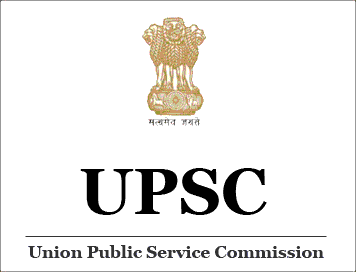
UPSC Recruitment Paper 2017 : Deputy Controller of Explosives
(Chemical Engineering & Chemistry)
1. The condition of stable equilibrium for a floating body is:
(a) The metacentre M coincides with the centre of gravity G
(b) The metacentre M is below the centre of gravity G
(c) The metacentre M is above the centre of gravity G
(d) The centre of buoyancy B is above the centre of gravity G
2. For a submerged curved surface, the vertical component of the hydrostatic force is:
(a) Mass of the liquid supported by the curved surface
(b) Weight of the liquid supported by the curved surface
(c) The force on the projected area of the curved surface on vertical plane
(d) Centriod of the liquid displaced by the body
3. The least radius of gyration of a ship is 8 m and metacentric height is 70 cm. Then the time period of oscillation of the ship is nea rly:
(a) 19.2 s
(b) 17.4 s
(c) 15.6 s
(d) 13.8 s
4. The flow of water leaving the impeller in a centrifugal pump casing is:
(a) Forced vortex flow
(b) Free vortex flow
(c) Centrifugal flow
(d) Centripetal force
5. A mouthpiece is a short length of pipe fitted to a tank containing flui d.Which one of the following mouthpiece s is having a maximum coefficient of discharge?
(a) External mouthpiece
(b) Convergent-divergent mouthpiece
(c) Internal mouthpiece
(d) Cylindrical mouthpiece
6. Hydraulic Gradient Line (HGL) is the sum of:
(a) Pressure head and kinetic head
(b) Kinetic head and datum head
(c) Pressure head, kinetic head and datum head
(d) Pressure head and datum head
7. Three pipes of length 800 mm, 500 mm and 400 mm and a diameter of 500 mm,400 mm and 300 mm respectively are connected in series. These pipes are to be replaced by a single pipe of length 1700 mm, and then the diameter of the single pipe should be nearly:
(a) 324 mm
(b) 344 mm
(c) 372 mm
(d) 412 mm
8. A smooth plate of length 4 mm and width 1.5 mm is moving with a velocity of 4 m/s in stationary air. If the kinematic viscosity of air is 1.5 × 10−5 m2/s, the thickness of the boundary layer at the trailing edge of the plate will be:
(a) 83.4 mm
(b) 86.3 mm
(c) 89.2 mm
(d) 92.1 mm
9. How many number of pumps are required to take out the water, from a deep well under a total head of 89 mm, assuming that all pumps are identical and are running at 800 rpm, the specific speed of each pump is 25, while rated capacity of each pump is 0.16 m3/s
(a) 3
(b) 4
(c) 5
(d) 7
10. The thermal conductivity (k) of insulators:
(a) Increases with increase in temperature
(b) Always increases with increase in the density of the material
(c) Decreases with increase in temperature
(d) Decreases due to convection phenomenon in insulators

Courtesy : UPSC